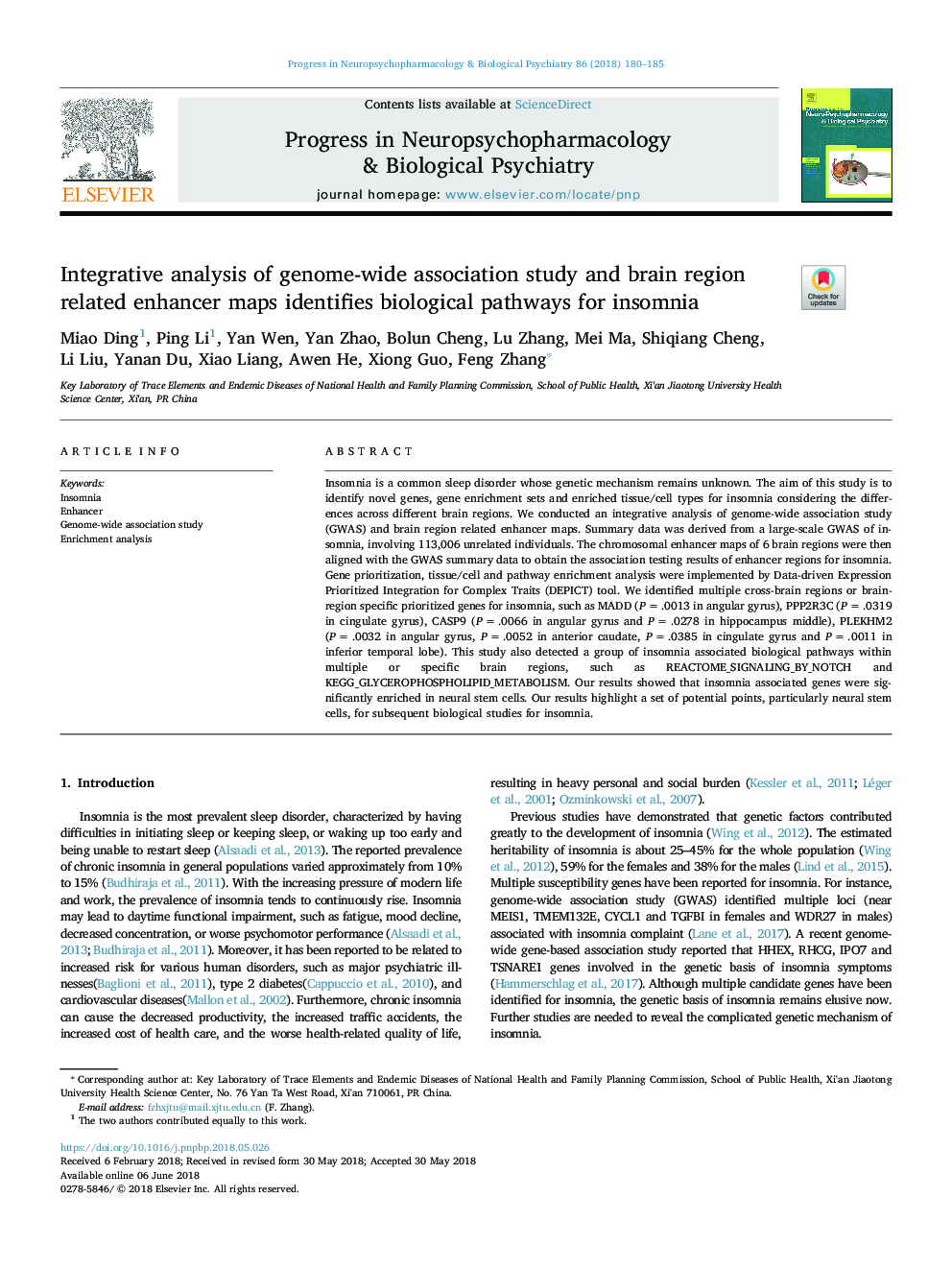| Article ID | Journal | Published Year | Pages | File Type |
|---|---|---|---|---|
| 8537232 | Progress in Neuro-Psychopharmacology and Biological Psychiatry | 2018 | 6 Pages |
Abstract
Insomnia is a common sleep disorder whose genetic mechanism remains unknown. The aim of this study is to identify novel genes, gene enrichment sets and enriched tissue/cell types for insomnia considering the differences across different brain regions. We conducted an integrative analysis of genome-wide association study (GWAS) and brain region related enhancer maps. Summary data was derived from a large-scale GWAS of insomnia, involving 113,006 unrelated individuals. The chromosomal enhancer maps of 6 brain regions were then aligned with the GWAS summary data to obtain the association testing results of enhancer regions for insomnia. Gene prioritization, tissue/cell and pathway enrichment analysis were implemented by Data-driven Expression Prioritized Integration for Complex Traits (DEPICT) tool. We identified multiple cross-brain regions or brain-region specific prioritized genes for insomnia, such as MADD (Pâ¯=â¯.0013 in angular gyrus), PPP2R3C (Pâ¯=â¯.0319 in cingulate gyrus), CASP9 (Pâ¯=â¯.0066 in angular gyrus and Pâ¯=â¯.0278 in hippocampus middle), PLEKHM2 (Pâ¯=â¯.0032 in angular gyrus, Pâ¯=â¯.0052 in anterior caudate, Pâ¯=â¯.0385 in cingulate gyrus and Pâ¯=â¯.0011 in inferior temporal lobe). This study also detected a group of insomnia associated biological pathways within multiple or specific brain regions, such as REACTOME_SIGNALING_BY_NOTCH and KEGG_GLYCEROPHOSPHOLIPID_METABOLISM. Our results showed that insomnia associated genes were significantly enriched in neural stem cells. Our results highlight a set of potential points, particularly neural stem cells, for subsequent biological studies for insomnia.
Related Topics
Life Sciences
Neuroscience
Biological Psychiatry
Authors
Miao Ding, Ping Li, Yan Wen, Yan Zhao, Bolun Cheng, Lu Zhang, Mei Ma, Shiqiang Cheng, Li Liu, Yanan Du, Xiao Liang, Awen He, Xiong Guo, Feng Zhang,
